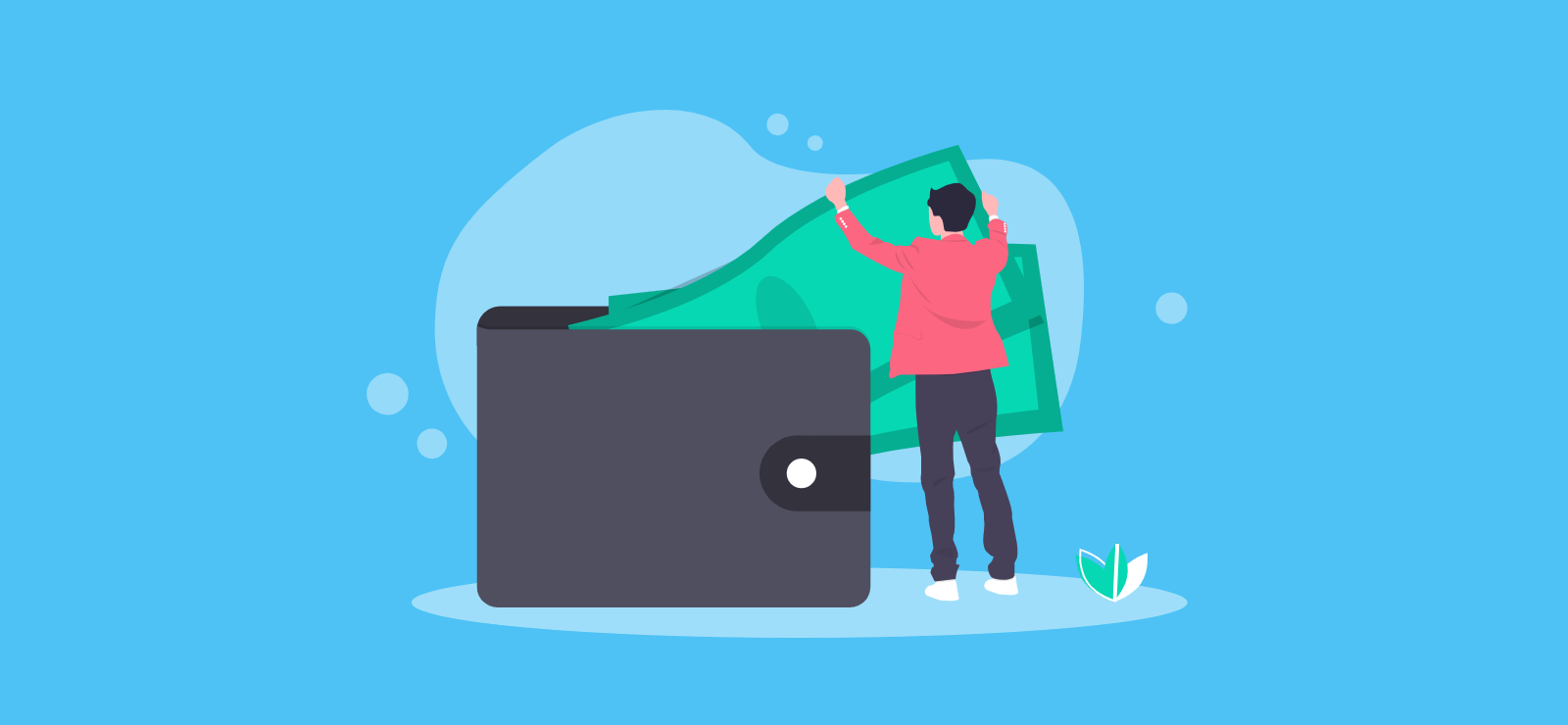

How Often Can I Take Dividends from my Limited Company?
If your business is set up as a limited company, paying yourself dividends alongside a salary is usually the most tax efficient way to draw money out. To help you manage the legal requirements of paying yourself from your business, we’ll explain how often you can take dividends, and what the process is for paying them.
What is a dividend?
Dividends are payments which a company makes to its shareholders out of its profits. These profits are essentially what is left over in the business once all taxes, expenses and liabilities have been paid. Also called ‘retained profit’, this left over money may accumulate over time. Watch our short video below about paying yourself from your limited company using dividends. We know it can be confusing, so get an instant quote online if you need more help!
How much can my company pay as a dividend?
There’s no limit, and no set amount – you might even pay your shareholders different dividend amounts. Dividends are paid from a company’s profits, so payments might fluctuate depending on how much profit is available. If the company doesn’t have any retained profit, it can’t make dividend payments. Doing so will likely to see you end up in hot water with HMRC, with penalties to pay!
Before you pay yourself or your shareholders a dividend, it’s important you make sure there’s enough money in the company to cover day-to-day cash flow. It’s also good to leave some profit in the business after paying dividends so there are funds available for other activities, like upgrading assets or investing in growth.
When can my company pay a dividend?
There aren’t any hard and fast rules about how frequently you can pay a dividend, and you can basically pay yourself or your shareholders whenever you like.
That said, regularly taking ad-hoc payments at random points throughout the year can sometimes indicate that there are issues with the way that funds are being managed. Most businesses distribute them quarterly or every six months, after working out what profits are left over at the end of the year.
The timing of dividend payments may affect how much tax you pay
For many businesses, profits can vary dramatically from one year to the next. In a particularly profitable year, you might take a tactical approach to paying dividends to pad out leaner times. This can also produce a more even income pattern, which makes personal financial planning less stressful, and can even help you avoid paying a higher tax rate.
For instance, if your company generates profits of £50,000 in Year 1, and £10,000 in Year 2, the total profits over two years will be £60,000. Rather than paying a large dividend one year, and a small one the next, you might decide to declare dividends of £30,000 per year.
This means you’ll have a more regular income, and if all your income is from these dividend payments, you’ll be under the threshold for basic rate tax in each year.
When do I pay tax on dividend payments?
Unlike a salary, dividends aren’t taxed at source, so you’ll need to declare them as part of your Self Assessment tax return. Any tax you owe for dividends normally needs paying to HMRC by the January following the end of the tax year during which the dividend was paid.
So, if a dividend was paid in late March 2025 for example, the tax on it is due in January 2026. A dividend paid in May 2025 falls into the following tax year, so the tax won’t need paying until January 2027 (though you can submit your tax return earlier than that!).
Who needs to pay dividend tax?
Dividends come from the company’s after-tax profit, so it doesn’t pay tax in respect of any dividend payments it makes. The shareholders that receive a dividend will normally need to declare it on their Self Assessment tax return, and pay tax accordingly. We have a guide to help you get started with Self Assessment if this is brand new to you!
Business owners who operate as a limited company tend to pay themselves through a combination of a regular salary and dividend payments to be more tax-efficient. The most tax efficient salary for a company director depends on how many of you there are in the business, and other income you might receive.
What about the tax-free Dividend Allowance?
The dividend allowance is the amount of dividends you can receive in a year before starting to pay tax on them. You can use it alongside your personal tax allowance (which can also be used against your dividend income). In the 2024/25 tax year the dividend allowance was £500.
How much is dividend tax?
The rate of tax you pay on dividends depends on your tax band (called your ‘marginal rate’). For example, if your total income for the year means that you’re a basic rate taxpayer, then you’ll pay the Dividend Basic Rate. We explain the rates and thresholds in more detail in our guide to paying tax on dividends.
What are the dividend tax rates and thresholds for the 2025/26 tax year?
The rates for dividend tax aren’t as high as income tax rates, and dividends aren’t subject to National Insurance either, which is what makes them more tax-efficient. The table below shows the dividend tax rates in force for 2024/25 (6th April 2024 - 5th April 2025) and 2025/26 (6th April 2025 - 5th April 2026). You can also use our free online dividend tax calculator to work out how much dividend tax you’ll pay, and what will be left over. Some dividend tax rates will increase in 2026/27.
2024/25 and 2025/26 Dividend Tax Rates and Thresholds
| Tax Bands | 2024/25 Dividend Tax Rate |
2025/26 Dividend Tax Rate |
2026/27 Dividend Tax Rate |
|
| Personal Allowance | £0 – £12,570 | 0% | 0% | 0% |
| Basic Rate | £12,571 - £50,270 | 8.75% | 8.75% | 10.75% |
| Higher Rate | £50,271 - £125,140 | 33.75% | 33.75% | 35.75% |
| Additional Rate | £125,140 upwards | 39.35% | 39.35% | 39.35% |
It’s important to understand how dividends and tax work, and to keep clear financial records both for the company as well as for your own personal income. If you can’t prove that money you receive from your business is a dividend, HMRC may consider it a salary payment – and tax it accordingly. The rate of income tax is higher than the dividend tax rate, so it can end up being an expensive mistake, especially if you also land a penalty to go with it! Ouch.
Learn more about our range of online accountancy services for businesses, or call 020 3355 4047 for a chat. Don’t forget, you can also get an instant online quote.
Want to learn more?
Subscribe to our newsletter to get accounting tips like this right to your inbox

Read more posts...

December 2025 Client of the Month: Honesty For Your Skin
23rd December 2025This month we spoke to Cheryl, owner of Honesty For Your Skin. Honesty For Your Skin | Instagram Hey Cheryl! Tell…
Read More
Staff Spotlight: Shawn Halton, Accounts Junior
19th December 2025Give an overview of the duties, functions, and responsibilities of your job. I provide bookkeeping services, VAT returns and annual accounts for…
Read More
The Accountancy Partnership – Our Positive Reviews
15th December 2025We’re proud of our customers’ reviews here at The Accountancy Partnership The reviews we receive from our customers show how hard we…
Read MoreConfirm Transactions
The number of monthly transactions you have entered based on your turnover seem high. A transaction is one bookkeeping entry such as a sale, purchase, payment or receipt. Are you sure this is correct?
Please contact our sales team if you’re unsure
VAT Returns
It is unlikely you will need this service, unless you are voluntarily registered for VAT.
Are you sure this is correct?
Call us on 020 3355 4047 if you’re not sure.
Bookkeeping
You will receive our bookkeeping software Pandle for free, as part of your package.
You can use this to complete your own bookkeeping, or we can provide a quote to complete your bookkeeping for you.
Please select and option below:
Call us on 020 3355 4047 if you’re not sure.


Thanks for the very helpful information free of charge!
That is very useful, thanks so much! Is there an online calculator , that you suggest, and you can put salary and dividends figures so it can calculate for you the tax that you should reserve/ pay?
If you’re a director of two different companies, do you get 2 x the £2000 directors dividend allowance? So £4000? Any advice would be really appreciated!
Hi Lauren
Thanks for your question! The allowance is a total allowance for the year, rather than for each directorship unfortunately, so you’ll only have the £2,000 dividend allowance once in a tax year. I hope this helps, but let us know if you have any questions at all!
Best wishes
Elizabeth
Hi Elizabeth,
Me, my mum and sister have inherited my father’s business and we are considering going Ltd. If mum is the owner and me and my sister are directors do we all get the tax relief on the first £2000 dividend and £11,900 salary.. if we pay all 3 of us the same?
Kindest regards
Joshua Midgley
Hi Joshua Thank you for your message. Yes you’re right, the dividend allowance is based on the individual, so you each get your own £2,000 dividend allowance, and can benefit from each taking a tax-efficient salary (this article explains how it works in a bit more detail than our one about dividends). Based on what you said about your Mum owning the company and you and your sister being directors though, it’s worth noting that: Only shareholders receive dividends. Directors only get dividends if they are also shareholders. Only directors can take a director’s salary. Shareholders don’t take a salary… Read more »
Excellent website with lots of helpful information. Just checking, if the owner/director wants to take money from his ltd, he must first pay corporate tax 19% (as an ltd) and then dividend tax (as a shareholder)? If it does not show a profit (ie it shows expenses), it should not pay a dividend. Corporate tax is the biggest difference compared to moonlighting because with a £9100 salary he doesn’t pay tax or NIC. And another question that is not directly related. If an individual has a dividend from the US, he pays 15% withholding tax. Does the ltd (as an… Read more »
Hi Mike Thanks for your kind words! You’re right, you must pay any Corporation Tax before taking dividends, but you could also take a salary which would reduce the Corporation Tax. Any dividends are then taken from Profits after tax. If there are no profits, correct there are no dividends available. So, withholding tax is taken from the individual or company, and the entity taking it off would pay this on their behalf. The entity would then not pay this again, as it is not their tax. If there is a Double Taxation Agreement in place between the UK and… Read more »
Ive got a couple of questions if that’s ok? I’ve recently formed a company with a friend of mine, we’re both directors. As I’ll be working full time and he won’t be working for the company much at all, we’ve agreed that paying me, but not him for mow, makes sense. It’s a property development company, so our profit will most likely come in chunks at the end of projects (as opposed to monthly sales or whatever). We think it makes sense to pay me a basic salary of £9,100 a year (which we read somewhere on this site is… Read more »
Hi James Thanks very much for getting in touch – yes, ask away! So, congratulations on your new company. First things first – a company director is different to a shareholder, but you can be both those things at the same time. A director can take a salary from the company, and this is paid through payroll (like an employee). The company can claim tax relief on the salary (so can offset it against the company tax bill). Taking a salary up to the optimum amount is more tax efficient, because that way you won’t be paying tax twice (as… Read more »
Many thanks for this vital information … and free-of-charge too. Although we are a very small start up company, should we grow to the point where we need an accountancy firm, we will most certainly select The Accountancy to do the more complicated work for us.
That’s lovely to hear, thank you Lance! Very best of luck with everything – let us know if there’s anything we can do to help.
Best wishes
Elizabeth
Great article. If a company is 50/50 split is it possible for one director to take dividends and the other to choose not to?
Hi Ali, Thanks very much for your message – and for your feedback! OK, so a company director is different to a shareholder, but you can be both those things at the same time. Directors can take a salary from the company This is paid through payroll (like it is for an employee). The company can claim tax relief on the salary, and offset it against the company tax bill. Taking a salary at the optimum amount is more tax efficient, because that way you won’t be paying tax twice (as an employer through your company, and as an employee… Read more »
Hi, Makes it a little bit clearer now although I do have need to clarify something please. We are a limited company that operates in the surveying field and we have set contracts for the year with different clients around the UK. Most of our expenses are being charged back to our customers (mileage, overnight accommodation etc), so we know what out minimum income for the roughly is. To be more tax efficient we will have a smaller salary and top up our income by taking out dividends so my question is can we take dividends out monthly or these… Read more »
Hi Razvan, Thanks for your message. There aren’t (technically) any restrictions on how often your company pays dividends, but a it is important to remember that dividends can only be paid out of the company’s after-tax profits, and that there’s enough money left in the business to protect its cashflow. Taking dividends very frequently makes it a bit harder to do this, and might also affect how tax efficient you are. For instance, if you take a large amount of dividends one year, and then the following year is a bit quieter and you don’t, you might push yourself over… Read more »
Hi, I am Director & only shareholder of my ltd co which has not traded this year but has retained profits from earlier years. I have small income from carers allowance (looking after elderly parent) – my question, is it OK to pay myself dividends from those retained profits this year, up to 2k over personal allowance (less the benefit income) and not have to pay tax (given personal allowance is tax free & 2k is tax-free anyway)?
Or would it be up to personal allowance only that is tax free?
Thanks!
Hi Jacquie Thanks for your message! Yes, you can pay dividends from retained profits, and you can also claim both the personal allowance and the dividend allowance in the same year. This article about dividend tax explains it in a bit more detail if that’s useful. On a side note, the timing of this is quite important! The dividend allowance for the 2022/23 tax year is £2,000, but this reduces to £1,000 in April when the 2023/24 tax year starts. I hope this helps, but please do let us know if there’s anything at all we can do for you!… Read more »
Hi, great website and very helpful introductory information. Just a quick question if possible. Are you able to leave all declared profits after Corporation Tax has been paid in the Ltd company to carry over in subsequent years, and then draw dividends in (say for example) years two and three? Would this still be possible if the Ltd company makes no profit in one particular year, but you simply draw dividends made from profit from previous years?
Many thanks
Hi Lee
Thanks so much for your feedback! Yes, that’s absolutely possible, and it can actually be a tax-efficient way to spread out your dividends. For instance, rather than taking a £60k dividend one year (which would put you into the higher rate tax category) and none the next, you could take £30k of dividends each year, and this would be under the higher rate tax threshold.
I hope this helps, but please do let us know if there’s anything at all we can do for you.
Best wishes
Elizabeth
My husband has his own decorating company x he gets taxed at the source by sun contractors , then he gets taxed again when he’s take money from his business as the company director. Is it correct that he should be taxed twice on the same money
Hi Lauren
Thanks very much for the message. It sounds like the contracting company make CIS deductions, in which case he can request a refund for CIS deducted. This can be done online or by post. HMRC’s website goes into more detail about the process, but do let us know if there’s anything we can do to help!
Best wishes
Elizabeth
Hi Can you help on this? Are two directors allowed to take different dividends – I am a higher rate taxpayer because of other income and my wife is the only other director and a lower rate payer – it is more tax efficient for her to take the dividend – is this acceptable? Thank you
Hi Russ
Thanks for your message. Yes, if both of those directors are shareholders, then they can take dividends. To pay dividends at different amounts, you can set up different types of shares. This article goes into it in a bit more detail, but please do let us know if you need any help!
Best wishes
Elizabeth
Hi, agree this is an excellent website :). I wonder if you could help with a query I have? I have a second property that I bought through a limited company with the intent to let out as a holiday cottage but have run into planning permission issues. I am therefore looking to let my primary home and move into this property for the next couple of years. I know I will need to pay market rent so it is not seen as a BIK. My question is if there are no profits (as all funds in the account are… Read more »
Hi Lindsey Thanks so much for your lovely feedback. As a sole director you can usually pay yourself a salary from the business, and then as a shareholder you can receive dividends from the company profits. Our article about taking the most tax-efficient director’s salary goes into more detail about how this works (and gives examples of salaries). Essentially if we run a payroll then you’ll pay the tax at source, but it helps to think of things separately here. So, the company is likely best to pay dividends once it makes enough profit to sustain you, and then you… Read more »
Hi, great article! I have just started a limited company with myself and my wife (Shares split 51/49) I am a director and she is a shareholder.
We both work so are not taking anything out of the business in the first six months for ourselves as we would like to progress it first, when we eventually look at paying ourselves dividends would we still get the £1,000 tax free even if working jobs elsewhere (paying tax)?
Hi Ross
Thanks for your kind words! Yes, the tax-free dividend allowance is available against your dividend income even if you have another source of income too. For the 2023/24 tax year the allowance is £1,000, but this will reduce to £500 in the 2024/25 tax year.
I hope this helps, but let us know if there’s anything at all we can do for you. In the meantime, best of luck with the new venture!
Best wishes
Elizabeth